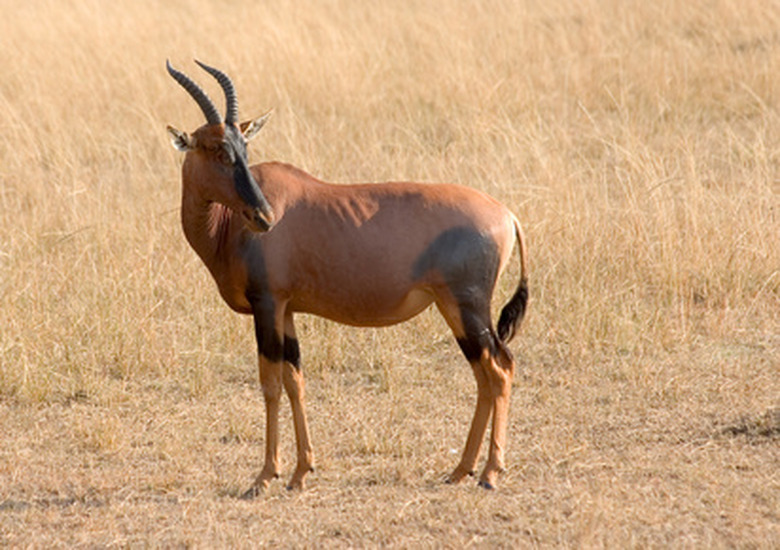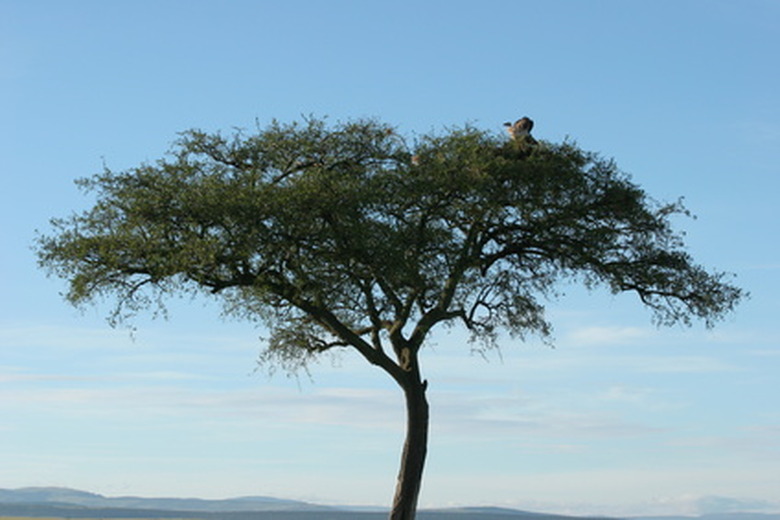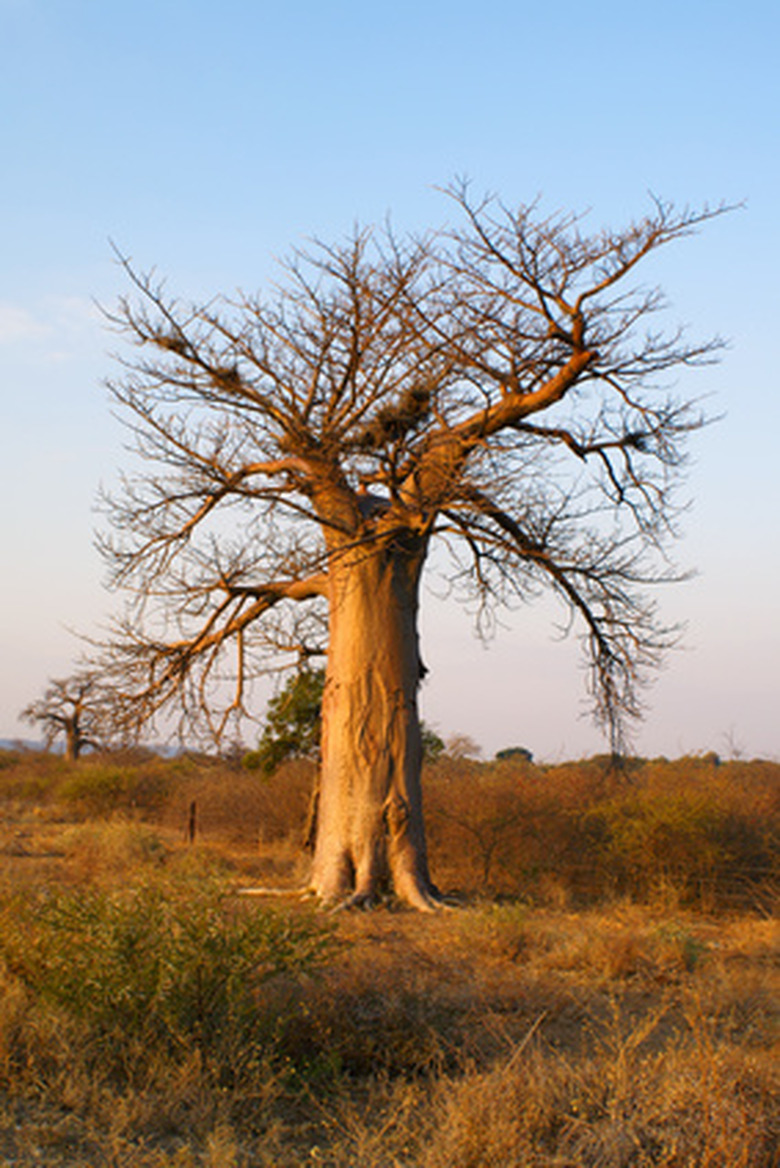Tropical Savanna Biome Plants
Biologists classify the world's major ecosystems according to the predominant plant life and how plants and animals adapt to that environment. The tropical savanna biome is best characterized by plants that have adapted to a long dry season with less than 2 inches of rain in some months, followed by a wet season. Adaptations include the ability to store water, long tap roots to reach the water table and a lack of foliage to help conserve energy. Tropical savanna biomes exist in southern Florida, southern Mexico, Central and South America, Africa, Australia and Indonesia.
Grasses
The most identifying characteristic of the tropical savanna is that the ground is covered with grasses. Bermuda grass is one of the most common grasses in the tropical savanna biome. With its deep root system, bermuda grass has adapted to the savanna by dying off above ground during periods of drought, while maintaining growth beneath the soil. Tropical savanna bermuda grass can grow over 1 foot tall with roots that delve 45 to 60 inches beneath the surface of the soil. Elephant grass, growing to a height of 10 feet, is also common on the African tropical savanna. Elephant grass grows in clumps and, despite its razor sharp leaves, provides shelter to several types of savanna birds.
- Biologists classify the world's major ecosystems according to the predominant plant life and how plants and animals adapt to that environment.
- Tropical savanna bermuda grass can grow over 1 foot tall with roots that delve 45 to 60 inches beneath the surface of the soil.
Acacia Tree
The Senegal gum acacia is a common sight in African tropical savanna biomes. A medium-sized tree, the mature gum acacia tree can reach 65 feet in height with a flat, round top and thorny branches. The gum acacia is a valuable tree in the tropical savanna, providing shade, shelter and food for the biome's animals. This acacia tolerates harsh conditions and survive up to a year without rain.
Baobab Tree
The baobab tree grows, usually solitary, near the equator, mainly in the tropical savannas of Australia, Africa and India. Leafless for 9 months of the year, the baobab appears to be a tangled mass of gnarled branches atop a tall, thick trunk. An Arabian legend claims that the tree was removed from the ground by the devil and stuck back in, upside down. (Refs. 5) The baobab is a tough tree, storing water in its massive trunk for use during the long, dry summers on the savanna. Perhaps this is how the tree can live to over 1000 years.
- The Senegal gum acacia is a common sight in African tropical savanna biomes.
- The gum acacia is a valuable tree in the tropical savanna, providing shade, shelter and food for the biome's animals.


